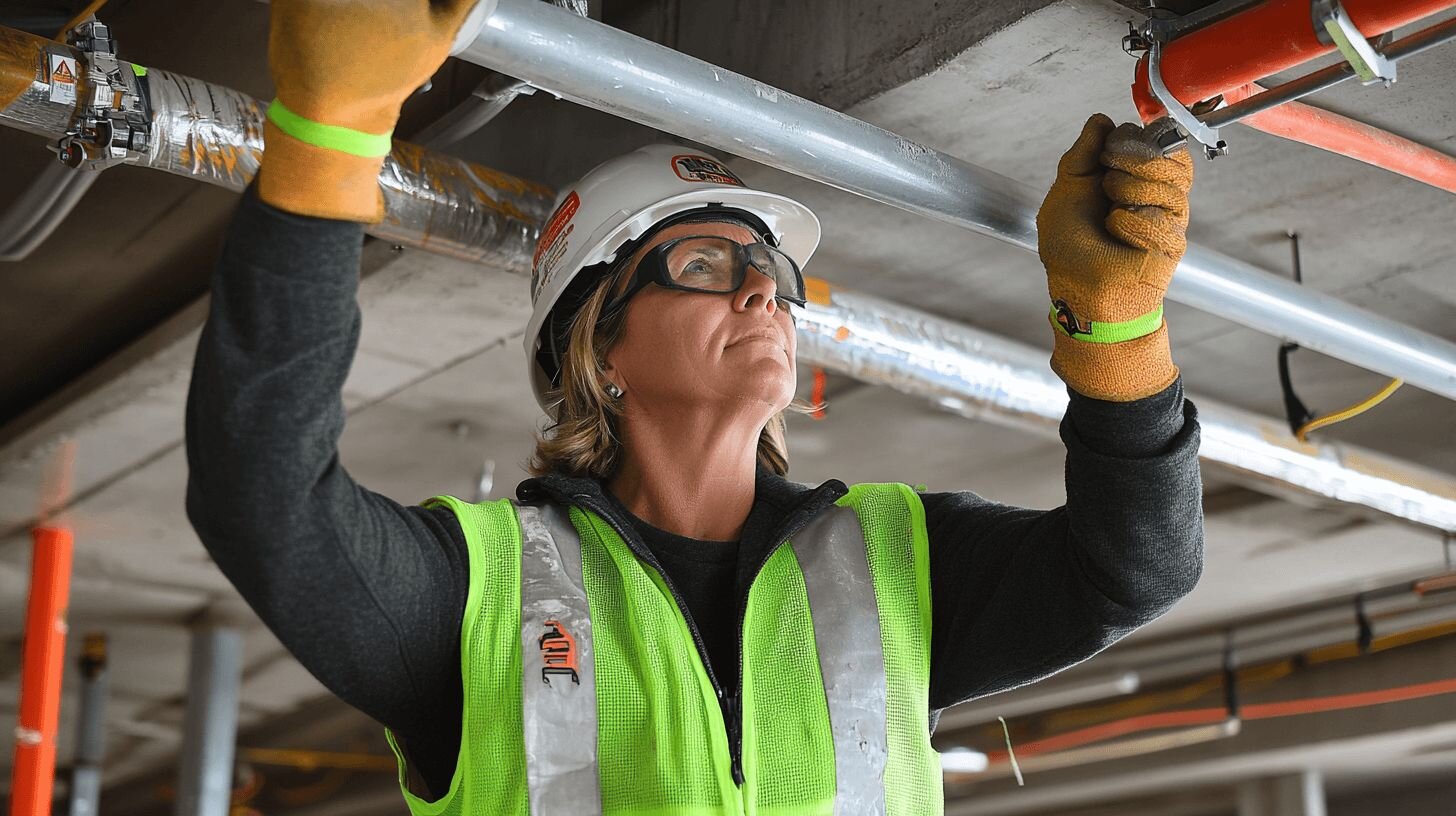When you’re dealing with sprinkler systems, signs may not be the first thing you think about, but they are part of the NFPA code. NFPA 25 makes signage a required part of system installs and maintenance, so it’s important to know which signs matter, which ones don’t, and how to keep your work from being flagged as a deficiency.
Inspectors sometimes mix up what’s required under NFPA 25 with what’s laid out in NFPA 13, which covers installation. That confusion can lead to unnecessary corrections, costing you time and money.
Signs That Aren’t Enforceable Under NFPA 25
Some signs are required at installation per NFPA 13, but they’re not enforceable in ongoing ITM (inspection, testing, and maintenance) under NFPA 25. These include:
- Main drain signs
- Inspector’s test connection signs
- Airline signs
- Alarm line identification
If these are missing, an inspector can log them as observations but not cite them as deficiencies.
Signs You Must Maintain
These signs are required under NFPA 25 and play a key role in keeping systems compliant and easy to operate.
Control Valve Signs (Section 13.3)
Every control valve needs a sign that clearly states which part of the building it serves. If more than one valve needs to be shut to isolate a system, you’re required to cross-reference them.
Example: In a hospital, the valve outside the surgical suite should reference the backup valve in the utility corridor that also needs to be closed to isolate the system.
Hydraulic Design Information Sign (Section 5.2.5)
This sign must be located at each system riser on hydraulically designed systems. It needs to be:
- Clearly legible
- Securely attached
- Inspected annually
For pipe schedule systems, the requirements are slightly different, but a sign is still required at the riser.
Information Sign (Sections 5.2.7 / 4.1.9)
Also inspected annually, this sign applies to dry, preaction, or antifreeze auxiliary systems. It must:
- Be at the system riser (the NFPA 2023 edition clarified that this refers to the piping between the water supply and check valve)
- Clearly state what area is controlled by the associated control valve
General Information Sign (Section 5.2.8)
This is different from the basic Information Sign. It includes more detailed system data, such as design parameters, system type, and operational notes.
During inspections, discrepancies in this information—like outdated details, unclear zone labeling, or mismatches between what's documented and what's installed—can raise questions. That’s why this sign often triggers necessary follow-up between the contractor and building owner to clarify or correct system records.
According to Annex A.5.2.8, this sign should also satisfy the Information Sign requirements noted above.
Antifreeze Sign (Sections 5.2.9 / 4.1.10)
If the system uses antifreeze, this sign must be present and must include:
- Manufacturer of the antifreeze
- Total volume of the system
- Type and brand of the antifreeze
- Percentage of the solution
FDC Identification (Section 13.8)
Every fire department connection (FDC) must clearly state:
- What system it serves (sprinkler, standpipe, or combo)
- Whether it’s automatic or manual
- For manual standpipes, whether it’s wet or dry
- If more than 150 psi is needed to pump the system, that pressure must be posted at the FDC
A Note on Control Valve Lists
There’s one more requirement to keep in mind, though it’s not technically signage. Section 4.1.8 of NFPA 25 says building owners must maintain a list of all control valves at each system riser and any other approved location.
This is the owner’s job to manage, not the contractor. An inspector can document it as an observation, but it’s not a compliance issue.
Bottom Line
If the signage requirement is listed in Chapters 5 through 14 of NFPA 25, you’re expected to enforce it. If it only shows up in NFPA 13 or outside those core chapters in 25, it’s not enforceable under ITM standards.
Make sure your team knows the difference. It helps you avoid unnecessary citations, keeps jobs on track, and shows your clients you know the code.



